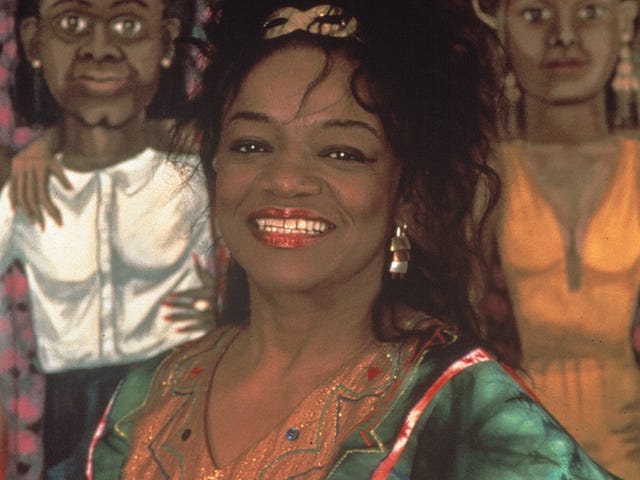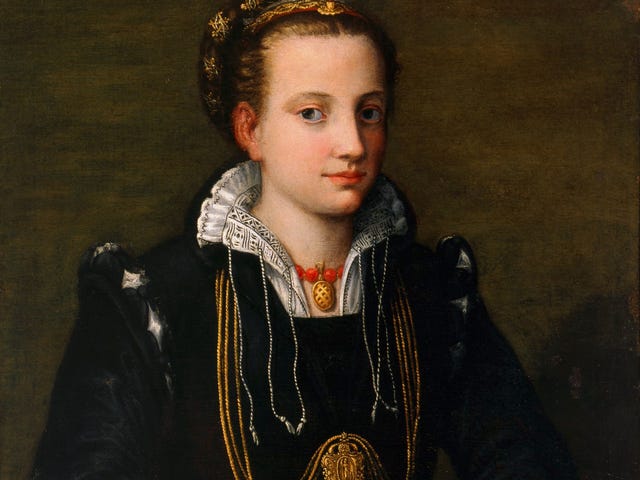From the Milwaukee Journal Sentinel, May 18, 2018, by Mary-Louise Schumacher:

Do we really need to put to rest the myth of the artist as a lone, male genius in 2018? Yes, we do.
Clearly, the makers of National Geographic’s current series “Genius: Picasso” and “The Final Portrait,” an accidental satire about Alberto Giacometti in theaters nationally (which mercifully departed Milwaukee), didn’t get the #MeToo memo.
Antonio Banderas’ take on Picasso treads cliche-ridden ground. In “Genius,” the artist’s longtime loves Marie-Thérèse Walter and Dora Maar attempt to scratch each other’s eyes out to a plucky soundtrack, while the artist smirks and goes back to his masterpiece making.
Geoffrey Rush’s take on Giacometti would have been merely droll had it not also been disturbing, down to the artist’s fantasies about the murder and rape of women.
We can only hope that Julian Schnabel’s in-the-works biopic about Vincent Van Gogh, starring Willem Dafoe, will be less of an eye roller.
And, as context, let’s not forget the backstory we heard from Salma Hayek about the suffering she endured working with Harvey Weinstein to get the biopic of Mexican muralist Frida Kahlo made.
On the occasion of recent cringe-worthy treatments, I invited art lovers, locally and beyond, to suggest artists whose lives would make for gloriously alternative biopics.
There is a world of artists whose stories are not well told. Here are just a few.
Mary Nohl
She left the School of the Art Institute of Chicago in the late `30s, when most of her female classmates leapt into marriages and mothering. She devoted herself to the pursuit of art – and was called a witch for it. Her Fox Point cottage beside Lake Michigan, the legendary drive-by often called “the witch’s house,” is one of the only intact artist-made environments by a woman in the world. She remained single and single-minded, creating scores of woodland sculptures of monsters and sunny-faced figures that seem to have been birthed by the bluffs themselves. She embraced the teasing, embedding “Boo” in beach stones into her stoop.

María Magdalena Campos-Pons
Her family story – and art – is entangled in an epic story of survival. It’s a tale about people being traded and enslaved by Spanish colonial powers, the abusive sugar industry in Cuba and the present day in the U.S. Her art is deeply rooted in that history, so a biopic could illuminate that, says Emilia Layden, curator at Marquette University’s Haggerty Museum of Art.

Maria Sol Escobar or “Marisol”
A prominent figure in New York’s 1960s art scene and later largely forgotten, Marisol created block-like wooden figures that explored American life. Her mother committed suicide, and Marisol spent much of her life not speaking as a result, even attending posh openings as an adult without saying a word. “As far as Latinas go, definitely Marisol,” says Los Angeles Times arts writer Carolina Miranda.
Edgar Heap of Birds
A prolific native artist whose work focuses on the colonial-era genocide of native peoples across North America, including Canada. “Why not give him a biopic for speaking the truth about American history?!” says Alicia Eler, art critic at the Minneapolis Star Tribune and author of “The Selfie Generation.”
Lee Miller
A fashion model-turned war photographer, Miller documented the suffering of victims inside the Nazi concentration camps like no one else, hung with a crowd of Surrealists, had an affair with artist Man Ray and was famously photographed in Adolf Hitler’s bathtub. She was also recommended by members of the Film Furies group on Facebook, a collection of women filmmakers from Milwaukee. Thankfully, a biopic in the works will star Kate Winslet.
The Propeller Group
Phunam Thuc Ha and Tuan Andrew Nguyen were born in Saigon. Matt Lucero is from southern California. All are children of the Vietnam War. Together, they are a three-person artist collective whose work explores the material culture of Vietnam, including themes of war, violence, history, street culture, ideas of ritual and dominant trends in popular culture. Their work has been described by the New York Times as “lush, bizarre, hallucinatory and phantasmagorical.” The Haggerty’s Layden suggested a number of collectives with decentralized decision making and authorship, including this one.

Faith Ringgold
Born in Harlem in the midst of the Harlem Renaissance, she was a public school teacher who made paintings called “American People” that documented the civil rights movement from the perspective of a woman. An artist and social activist, she is best known for her narrative quilts, a traditional craft with roots in pre-Civil War-era slave culture. She was recommended by Chicago filmmaker Jennifer Peepas, among several others.
Artemisia Gentileschi
She is raped and then tortured in court as she gives testimony. “She nonetheless becomes a great painter — and paints one of the most iconic canvases depicting the death of John the Baptist in history,” says Miranda. There was a biopic about the Italian Baroque painter, though it was controversial in its attempt to depict her relationship with her teacher. Shelleen Greene, an associate professor of film at UCLA, points out. “I think a remake would raise interesting questions about the nature of the biopic and narrative cinema…” Greene says.

Ana Mendieta
She fell in with avant-garde artists at the University of Iowa, and went on to make work that explores her body, the landscape and violence against women in photographs, films and performances, according to the Guggenheim Museum’s page on the artist. Mendieta fell 34 stories to her death as her art career was primed to take off. She had what was by many accounts a tumultuous marriage with the artist Carl Andre, and rumors persist about whether Andre may have pushed his 36-year-old wife from a New York high rise. He was, however, acquitted of murder charges. Lisa Sutcliffe, curator of photography at the Milwaukee Art Museum, suggested Mendieta.
Maggie Nelson and Harry Dodge
It seems like a contradiction, to have a life rooted in indeterminacy, but that is what this artist-critic couple have fashioned for themselves, according to Nelson’s critically acclaimed memoir “The Argonauts.” The experimental book – a tale of art making, love making, philosophy making and queer homemaking in Los Angeles – has a cult following and could be the basis for a terrific biopic.
Betye Saar
Symbols of oppression become objects of liberation in Saar’s hands. Consider the Molotov cocktail she made from a wine jug featuring a mammy on the label, a kerchief dangling from the little green bottle as a torch. Plainspoken and potentially explosive –that’s Saar, a second-wave feminist and pioneer of postwar black nationalist aesthetics. She is most known for reclaiming the Aunt Jemima figure. She’s also the mother of three daughters, including two accomplished artists. “She was so pioneering, and I’d love to see (a film) explore that,” says Jillian Steinhauer, a Brooklyn-based arts writer who writes for publications such as the New York Times Book Review and Paris Review Daily.
LaNia Sproles
She grew up in Milwaukee, one of the most racially and economically segregated cities in the U.S.. A graduate of the Milwaukee Institute of Art & Design, she is inspired by the work of artists Laylah Ali and Kara Walker and poet Warsan Shire. “As a black queer woman I am insecure and overwhelmed with displacement,” she writes of her herself. “Displacement encourages relocation and relocation encourages isolation.” She is one of the “most creative, kind, and hard-working” artists says Michaela (Mikey) Murry, a Milwaukee performance artist.
Justin Vivian Bond
“I was notorious from the age of 11 onward,” Bond wrote in a memoir of childhood, “Tango.” “That may sound very dramatic, but I’m afraid it’s true.” Bond, a transgender performance artist with a penchant for Carpenters songs and a devoted following among New York City’s avant-garde represents a fascinating, coming-of-age story.
Rosa Bonheur
She was the most famous painter of her time, received by Queen Victoria when her painting “The Horse Fair” was exhibited in England, though she became achingly unfashionable in her lifetime, according to a 1997 New York Times article. She was a lover of animals, and made drawings and paintings of goats, sheep and other creatures. She also dressed like a man, getting a permit from the Paris police to do so, and had female partners, according to the Times. One biographer described her as “unconventional but not a rebel.” After “careful consideration,” Susan Longhenry, director of the Haggerty, nominated her.

Sofonisba Anguissola
One of the earliest female artists identified in the Renaissance, working in Italy in the late 16th century, she was famous in her era and worked as the court painter for the King of Spain, according to a blog post at the Milwaukee Art Museum. Anguissola is “one of the great artists of the Renaissance…whose work has escaped art historical attention,” says MAM’s director Marcelle Polednik. Her work shifts our understanding of the Renaissance itself and male artists of that era as well, Polednik says. Curatorial sleuthing recently revealed that a work hanging at MAM, believed to be a self-portrait, is actually of the artist’s younger sister.



